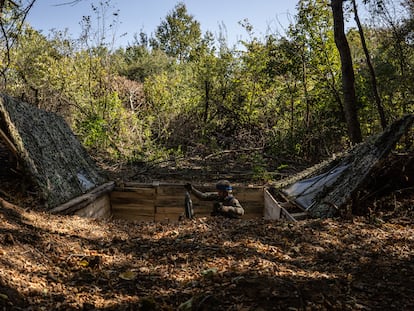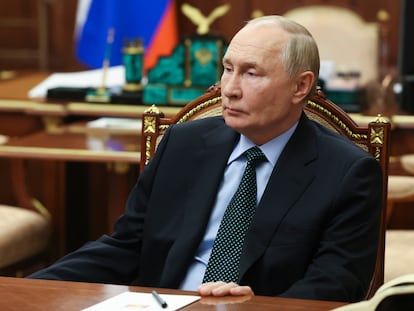Moscow claims Ukraine launched first strike on Russian soil with US missiles
According to the Kremlin, Kyiv struck a facility in the Bryansk region with ATACMS


The Ukrainian military has crossed another one of Russia’s red lines by using long-range U.S.-made ATACMS missiles in the Bryansk region, located roughly 400 kilometers (250 miles) southwest of Moscow. According to the Ukrainian Ministry of Defense — which did not confirm the use of these missiles specifically — the strike targeted a Russian military facility.
According to the Russian Defense Ministry, five missiles were intercepted and another damaged. This is the first time that Kyiv has been reported to have used Western-supplied long-range missiles to strike inside Russian territory. The Kremlin has previously warned that such actions would signify a breach of a major threshold, implicating direct U.S. involvement in the war.
“At 3.25 tonight the enemy struck a facility on the territory of the Bryansk region with six ballistic missiles. According to confirmed reports, U.S.-made ATACMS operational-tactical missiles were used,” the Russian Defense Ministry said in a statement. “Its fragments fell on the technical territory of a military facility in the Bryansk region, causing a fire, which was promptly extinguished.”
The Ukrainian news agency RBC-Ukraine quotes a Ukrainian army source as stating that these missiles have been used for the first time to attack a target in Russian territory, specifically a military facility in Karachev, located around 130 kilometers (80 miles) from the Ukrainian border, and that they reached their target. “The attack was successful,” asserted the Ukrainian media.
The Russian news channel Astra posted several images and videos on Telegram of the alleged strike on the facilities of the 67th arsenal of the Main Missile and Artillery Directorate of Russia. The videos, which could not be verified, show an intense blaze against the dark of night, accompanied by a prolonged loop of explosions, allegedly coming from ammunition stored at the arsenal.
“Residents say that the siren has been sounding since 2 a.m., but there was nowhere to hide,” Astra adds. According to the Russian Defense Ministry, the area’s defenses were equipped with S-400 long-range and Pantsir short-range anti-aircraft systems.
“I have no doubt that our army has the situation under control,” Vladimir Putin’s spokesman, Dmitry Peskov, responded when asked at midday about the attack. The Kremlin, which at the time claimed not to have any data, published at the same time a presidential decree by which the new Russian nuclear doctrine comes into force as of Tuesday.
The document, which includes the guidelines to be followed for the “nuclear deterrence” of other powers, specifies that any attack perpetrated against Russia by a country which does not have nuclear weapons, but which has the support of a third state that is a nuclear power, will be considered a joint aggression on the part of both nations.
The U.S. media reported on November 17 that the outgoing U.S. administration of Joe Biden had authorized Ukraine to use its missiles on Russian territory. A day later, Peskov warned that this step would escalate the war. Putin, whose red lines have been crossed in the past, declared in September that an attack with ATACMS would mean that “NATO countries — the United States and European countries — are at war with Russia.”
Sign up for our weekly newsletter to get more English-language news coverage from EL PAÍS USA Edition
Tu suscripción se está usando en otro dispositivo
¿Quieres añadir otro usuario a tu suscripción?
Si continúas leyendo en este dispositivo, no se podrá leer en el otro.
FlechaTu suscripción se está usando en otro dispositivo y solo puedes acceder a EL PAÍS desde un dispositivo a la vez.
Si quieres compartir tu cuenta, cambia tu suscripción a la modalidad Premium, así podrás añadir otro usuario. Cada uno accederá con su propia cuenta de email, lo que os permitirá personalizar vuestra experiencia en EL PAÍS.
¿Tienes una suscripción de empresa? Accede aquí para contratar más cuentas.
En el caso de no saber quién está usando tu cuenta, te recomendamos cambiar tu contraseña aquí.
Si decides continuar compartiendo tu cuenta, este mensaje se mostrará en tu dispositivo y en el de la otra persona que está usando tu cuenta de forma indefinida, afectando a tu experiencia de lectura. Puedes consultar aquí los términos y condiciones de la suscripción digital.
More information
Archived In
Últimas noticias
Mexico seeks to shore up its defenses following US incursion in Venezuela
Hope gives way to uncertainty among Venezuelan exiles in the US after Maduro’s capture
Cubans look to Venezuela fearfully after Trump’s incursion: ‘We could be next’
The operation in Venezuela to capture Maduro threatens to widen the cracks in the MAGA movement
Most viewed
- Alain Aspect, Nobel laureate in physics: ‘Einstein was so smart that he would have had to recognize quantum entanglement’
- Gilles Lipovetsky: ‘If you want to live better and fall in love, take Prozac, don’t look to philosophy’
- Alvin Hellerstein, a 92-year-old judge appointed by Bill Clinton, to preside over Maduro’s trial in New York
- Cuba confirms death of 32 of its citizens in the US attack against Venezuela
- Why oil has been at the center of Venezuela-US conflicts for decades










































